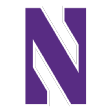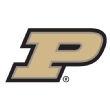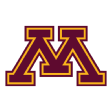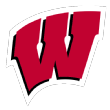More than seven weeks into the 2020 college football season, our 2020 preview series somehow rolls on. The Big Ten's fall football season, postponed in August and reinstated in September, finally kicks off this weekend, which means you have 14 more team capsules to read.
Today, we talk about the West division. After a spirited race with Minnesota and Iowa, Wisconsin won the West last fall to secure its sixth conference-title game appearance in nine years. The Badgers will have to win an eight-game, no-byes sprint to make it seven in 10, and while they're the favorites to do so, last year's challengers have enough to make another run. And might we see a dark horse candidate, too?
For a complete breakdown of the rest of the conference, check out the Big Ten East preview.
Jump to: Illinois | Northwestern | Purdue | Iowa | Nebraska | Minnesota | Wisconsin
 Illinois
Illinois
Head coach: Lovie Smith (15-34, fifth year)
2019: 6-7 (4-5 in Big Ten), 61st in SP+
2020 projection: 3-5, 66th
Top returning players: WR Josh Imatorbhebhe, LB Jake Hansen, LB Milo Eifler, LG Doug Kramer, CB Nate Hobbs
Three years into his Illinois tenure, Lovie Smith found himself in a quandary. When his squad had a talent advantage, or at least talent equality, it fared pretty well. Unfortunately, that was almost never the case. He was 9-27 overall and 4-24 against power-conference programs, and his first three recruiting classes had an average ESPN ranking of 60th. He needed a dramatic talent upgrade.
Smith hired a well-regarded St. Louis high school coach (Cory Patterson) to help with STL recruiting, and though his 2019 class still didn't rank in the top 50, it did include four four-star recruits, including three St. Louisans. More importantly, he welcomed any and all transfers. Last fall, Illinois started former blue-chippers at quarterback (Michigan's Brandon Peters), receiver (USC's Josh Imatorbhebhe and, when healthy, USC's Trevon Sidney), right guard (Alabama's Richie Petitbon) and rush end (USC's Oluwole Betiku Jr.) -- Georgia's Luke Ford would have started at tight end had he received a waiver.
The offense battled injury issues but played well up front and produced in key moments. The defense, led by Betiku's pass rushing, linebacker Dele Harding's run stuffing and sturdy secondary play, improved from 115th to 54th in defensive SP+. Illinois jumped from 83rd in SP+ in mid-September to 51st in early November, and after winning four total conference games in three seasons (two of which were against Rutgers), the Illini ripped off four wins in a row -- including thrilling comeback victories over Wisconsin and Michigan State -- to bowl for the first time since 2014.
In 2020, Illinois loses Harding and last year's top four defensive linemen, including Betiku. Considering how important run support was to last year's defensive improvement -- Illinois was 48th in rushing success rate allowed and 19th in stuff rate, the percentage of runs stopped at or behind the line -- this is worrisome. On offense, Petitbon and two 500-yard rushers have also left town. But while Peters certainly didn't shine behind center (93rd in total QBR), he has a seasoned and solid offensive line in front of him, and the receiving corps is loaded, led by Imatorbhebhe, Donny Navarro, Sidney, tight end Daniel Barker and now Ford and a couple of new transfers (NMSU receiver Desmond Dan Jr., USC tight end Daniel Imatorbhebhe).
The secondary and linebacking corps should remain sturdy, and Smith went back to the transfer well, too, adding disruptive SC State tackle Roderick Perry II and getting Miami DB Derrick Smith eligible. We'll also see how last year's blue-chip freshmen, all redshirts, fold into the action.
Smith has undoubtedly figured out how to upgrade the talent level in Champaign -- Imatorbhebhe is particularly top-notch -- but there's a lot of talent in the Big Ten, and the Illini are still playing from behind. They could have really used now-canceled nonconference games against Illinois State, UConn and Bowling Green to plump up the win total in 2020. Still, they should remain competitive and interesting against an all-Big Ten schedule; that's not something we'd have been likely to say a couple of years ago.
 Northwestern
Northwestern
Head coach: Pat Fitzgerald (99-79, 15th year)
2019: 3-9 (1-8), 91st in SP+
2020 projection: 3-5, 54th
Top returning players: LB Paddy Fisher, LB Blake Gallagher, RG Nik Urban, CB Cameron Ruiz
In 2015, Pat Fitzgerald's Wildcats averaged only 19.5 points per game, ranked 122nd in offensive SP+ and outscored opponents by 12 points all season. But thanks to five one-score wins, they somehow went 10-3.
In 2019, another impotent offense (123rd) did what it's supposed to do: lose a lot. With a revolving door at QB and no efficient options, the Wildcats averaged 6.9 points per game against their first seven power-conference opponents, losing all seven games. They found some rhythm late but finished just 3-9; one year after winning the division title, they went 1-8 in Big Ten play.
Loyalty is a big part of Fitzgerald's success -- he both shows it and fosters it. Mick McCall and Mike Hankwitz had been his offensive and defensive coordinators, respectively, since 2008. But McCall's past six offenses had averaged an offensive SP+ ranking of 95th. Thanks to strong defense and impervious close-game performances, NU still won nine-plus games three times in that stretch, but 2019 was the last straw. Fitzgerald replaced McCall with former Boston College offensive coordinator Mike Bajakian.
In April, I wrote that the Bajakian hire was one of my favorites of the offseason. BC ran as much as any non-triple-option team in the country and operated at the third-highest tempo. I doubt they'll run that much in Evanston, but they'll have an identity. It's been a while since you could say that about a Northwestern offense.
There aren't many proven entities on O, but there are at least experienced options. Thanks to the addition of Indiana grad transfer Peyton Ramsey, five NU QBs threw at least 10 passes last season, and two backs -- Isaiah Bowser and Drake Anderson -- have taken on heavy loads before. (Redshirt freshman Evan Hull thrived during a four-game audition, too.) The line no longer features NFL prospect Rashawn Slater at left tackle, but four other players have starting experience. The receiving corps is led by three seniors, plus a fourth in FAU tight end transfer John Raine. Best of all, the bar is awfully low. If Bajakian gets this unit back into the top-80, it's a massive success.
Per SP+, Hankwitz has fielded a top-30 defense in five of the past six seasons. If the line holds up, that should be six of seven. Hankwitz must replace excellent starters in ends Joe Gaziano and Trent Goens and tackle Alex Miller after accounting for about two-thirds of the line's TFLs last year, but thanks to injuries and shuffling, a lot of other linemen saw action. Six of seven DBs and basically every linebacker return; corners Cameron Ruiz and Greg Newsome II are solid, and the senior LB trio of Blake Gallagher, Paddy Fisher and Chris Bergin is among the Big Ten's best. Gaziano was basically a one-man pass rush, so his absence is concerning, but it's just about the lone concern. If the offense contributes anything at all, the defense should be solid enough to keep Northwestern competitive.
 Purdue
Purdue
Head coach: Jeff Brohm (17-21, fourth year)
2019: 4-8 (3-6), 64th in SP+
2020 projection: 3-5, 48th
Top returning players: WR Rondale Moore, DE George Karlaftis, WR David Bell, DE/OLB Derrick Barnes, LB Jaylan Alexander
From 2015 to 2018, almost no college football coach in the country coaxed more production out of his rosters than Jeff Brohm did. The former Louisville quarterback ripped off 23 wins in two seasons at Western Kentucky, winning Conference USA in 2016 and playing maybe the best ball in the Group of Five for much of that season.
That success earned him a shot at rebuilding Purdue. The Boilermakers had won just nine games in four seasons when he arrived in West Lafayette, but he immediately improved them from 3-9 and 105th in SP+ to 7-6 and 48th. And despite up-and-down results in a 6-7 campaign in 2018, they unleashed hell during a 4-1 midseason stretch that included a stunning 49-20 demolition of Ohio State. Their best player was a freshman (Rondale Moore) and the future was bright.
Brohm's Boilermakers were destroyed by injuries, however -- from Moore and other receivers to senior quarterback Elijah Sindelar to a lot of both lines and to the secondary. Brohm hadn't built nearly enough depth in two years to account for what he was losing from the two-deep from week to week, and for the first time as a head coach, he couldn't coax out the production he needed.
Purdue stumbled to 4-8, alternating between promising and disappointing performances. The offense slid from 17th to 45th in offensive SP+, and the defense, 82nd in defensive SP+, couldn't pick up enough slack.
In Moore and David Bell, the Boilermakers now have two receivers who gained over 1,000 receiving yards as freshmen. (Another recent recruit, defensive end George Karlaftis, was maybe even better as a freshman last year, logging 17 TFLs and 7.5 sacks.) In Jack Plummer and Aidan O'Connell, they have two quarterbacks who got their feet a lot wetter than expected in Sindelar's absence. Plummer is younger, but O'Connell looked better in a three-start audition. His 72.8 total QBR would have ranked 28th for the season.
The offensive line returns five of the eight players who saw starting action last year, and the defensive line returns a strong pair of ends (Karlaftis and 11-TFL edge rusher Derrick Barnes), plus tackle Lorenzo Neal, a 2019 co-captain who missed the entire year with a knee injury. Aside from the linebacking corps, every unit on the roster boasts more experience than it had this time last year. The Boilermakers added a solid transfer safety in UConn's Tyler Coyle, too.
Brohm will begin the season sidelined after testing positive for the coronavirus, which could bring with it unknown effects, but considering how competitive the Boilermakers still managed to be for much of 2019, it seems likely they should reassume a top-50 (or higher) level of play. But we'll see what that means in a division that could be packed with top-30-caliber teams. The Boilermakers' schedule is full of potential tossups -- SP+ projects six of their eight games within one touchdown -- so this short season could go a lot of different directions. And even though Moore will be gone after 2020, a lot of other stars are sophomores who can move Purdue in a positive direction.
 Iowa
Iowa
Head coach: Kirk Ferentz (162-104, 22nd year)
2019: 10-3 (6-3), 20th in SP+
2020 projection: 4-4, 27th
Top returning players: WR Ihmir Smith-Marsette, RB Tyler Goodson, DE Chauncey Golston, WR Tyrone Tracy Jr., CB Matt Hankins
With allegations of mistreatment of Black players, the expensive dismissal of its strength coach, head coach Kirk Ferentz's admissions of a "blind spot" and an internal report documenting other problems, Iowa had a trying offseason even before the uncertainty of the Big Ten's August cancellations. We don't know what effect that tumult might have on the team, the locker room or anything else, so we'll keep things straightforward in regard to what we know about this year's team:
It needs a new quarterback. Nate Stanley is gone after three years and 8,240 yards. Sophomore Spencer Petras completed 6 of 10 passes in reserve duty last year, and he appears to be the likely starter, though redshirt freshman Alex Padilla and well-touted true freshman Deuce Hogan are options.
The skill corps is seasoned. Senior receivers Ihmir Smith-Marsette and Brandon Smith are high-efficiency veterans, and Smith-Marsette has some proven pop. A heavy load of sophomores -- running back Tyler Goodson, receivers Nico Ragaini and Tyrone Tracy Jr. -- also received consistent playing time last season. Like Smith-Marsette, Tracy averaged more than 16 yards per catch. Buffalo transfer Charlie Jones is speedy, too.
Big names are gone from the trenches. Line play is typically an Iowa strength, and the Hawkeyes have some proven entities on both sides of the ball -- left tackle Alaric Jackson and center Tyler Linderbaum on offense, end Chauncey Golston, tackle Daviyon Nixon and NIU transfer Jack Heflin on defense. Still, offensive tackle Tristan Wirfs was a top-15 pick in the NFL draft, and end A.J. Epenesa was a second-rounder -- they were probably Iowa's two best players last year.
The top three playmakers in the defensive back seven are gone. Linebacker Kristian Welch, safety Geno Stone and corner Michael Ojemudia were, along with Epenesa and Golston, among Iowa's top five havoc creators last year (TFLs, passes defensed, forced fumbles). They're all gone, leaving Golston as the only proven disruptor on the first string. Linebacker Nick Niemann, corner Matt Hankins and safeties Jack Koerner and Dane Belton are experienced, and they'll have to not only provide leadership, but also make a few more plays.
The special-teams unit should still be dangerous. Kicker Keith Duncan salvaged points on many a drive last season -- he was asked to attempt 18 field goals of more than 40 yards, which is ridiculous, but he made 14 of them -- and Smith-Marsette is one of the country's best kick-returners. Iowa was top-15 in special-teams SP+ and should be again.
Under normal circumstances, this would be an awfully "Iowa" team. The Hawkeyes are experienced and smart, and they have at least a few high-upside pieces. The QB change and depletion of known playmakers on D, however, could hold them back in a packed West race, as could the loss of a couple of high-upside difference-makers in the trenches. SP+ projects them as a favorite in their first three games, though, so a fast start is on the table.
 Nebraska
Nebraska
Head coach: Scott Frost (9-15, third year)
2019: 5-7 (3-6), 55th in SP+
2020 projection: 4-4, 30th
Top returning players: LT Brenden Jaimes, QB Adrian Martinez, RB Dedrick Mills, LB JoJo Domann, CB/S Cam Taylor-Britt
A product of Wood River, Nebraska, 100 miles from Memorial Stadium, leads the Cornhuskers to a national title; learns the teachings of Tom Osborne, Bill Walsh, Bill Belichick, Jon Gruden, Mike Tomlin and peak-Chip Kelly; flips UCF from 0-12 to 13-0 in two years; and then returns home to officially make Nebraska Nebraska again. In terms of football, aesthetics and storybooks, how could it get more perfect than that?
After two seasons at Nebraska, however, Frost is just 9-15. The Cornhuskers have technically improved under his watch -- from 62nd in SP+ in 2017 to 49th and 55th in his two years -- but it was easy to get wrapped up in the story and assume something beyond slight growth.
The offense should improve if Adrian Martinez remains 100 percent. He battled knee issues throughout last season and failed to generate consistency, and his total QBR ranking fell from 54th to 77th. Still, he had his moments -- 328 yards passing and 118 rushing in a comeback win over Illinois, for instance. The skill corps hasn't really come around as expected, though. Blue-chip running back Maurice Washington was dismissed last season, and leading receiver JD Spielman transferred this offseason to TCU. Only two returning players caught more than 15 passes last year.
Running back Dedrick Mills rushed for 745 yards in his first year out of Garden City Community College in Kansas, and blue-chip sophomore Wan'Dale Robinson is an intriguing utility man (453 receiving yards, 340 rushing yards). Plus, the offensive line could be very good: All five starters return, including left tackle Brenden Jaimes, an all-conference candidate. Experience levels are favorable, but Martinez needs to show the growth he couldn't last year, and the skill corps needs at least a couple of recent star recruits -- freshman wideout Zavier Betts or juco transfer Omar Manning, perhaps? -- to step up.
The defense is where most of the problems have come. Frost and coordinator Erik Chinander inherited a unit that had averaged a No. 51 defensive SP+ ranking under Mike Riley and oversaw regression to 55th, then 63rd. The pass defense was rock solid -- 37th in passing success rate allowed, 24th in adjusted net yards per attempt -- but the run defense was dreadful, and that was before the line lost its top three tacklers.
The secondary loses star corner Lamar Jackson, but senior Dicaprio Bootle is solid, as are safety Marquel Dismuke and corner/safety Cam Taylor-Britt. The DBs should hold up, but there is a near-total lack of proven playmakers in the front seven. Outside linebacker JoJo Domann is awesome, but the fact that Frost signed four juco linemen and linebackers kind of speaks for itself.
SP+ is bullish on Nebraska improving this year despite Spielman's transfer, but the presence of three of the top six teams in the country (per SP+) on the schedule means that a much-improved, top-30 caliber team goes 4-4. And overall, West contention will depend on defensive disruption; there just wasn't nearly enough of it last year, and there's no guarantee that will change.
 Minnesota
Minnesota
Head coach: P.J. Fleck (23-15, fourth year)
2019: 11-2 (7-2), 13th in SP+
2020 projection: 5-3, 16th
Top returning players: WR Rashod Bateman, QB Tanner Morgan, RT Daniel Faalele, CB Benjamin St-Juste, CB Jordan Howden
The college football season will forever have a small-sample problem, but it still has massive potential for narrative shifts.
Think back to September 2019: It was fair to call Minnesota an underachiever. P.J. Fleck's Golden Gophers were projected 30th in SP+, but they found themselves tied with South Dakota State after 54 minutes and trailing both Fresno State and Georgia Southern in the final minute. They rallied each time, winning the three games by a combined 13 points, but there were serious question marks, especially on defense. Minnesota entered conference play having fallen to 50th overall.
Fast forward to Nov. 9: After winning their previous four conference games by an average of 42-10, the still-unbeaten Gophers topped No. 5 Penn State Nittany Lions at home 31-26 to move to seventh in the AP poll. They would lose to Iowa and Wisconsin down the stretch, but a win over Auburn in the Outback Bowl gave them their first 11-win season since 1904 and their first AP top-10 finish since 1962. The offense had gone from good to great (seventh in offensive SP+) and the defense from mediocre to good (26th). The narrative shifted entirely.
The level of brilliance Minnesota attained in October, and the fact it maintained some degree of it, makes the Gophers an awfully intriguing team in 2020. Offensive coordinator Kirk Ciarrocca was plucked away by Penn State, 1,300-yard wide receiver Tyler Johnson is now a Tampa Bay Buccaneer and each unit on the defense has some attrition to work through. But quarterback Tanner Morgan, 1,200-yard wideout Rashod Bateman and nearly every offensive lineman return, as do strong cornerbacks Jordan Howden and Benjamin St-Juste, an excellent nickelback in Coney Durr and a load of juniors and seniors who looked solid in smaller samples last season. Granted, a Big Ten-only schedule means Minnesota could be punished much more harshly for a slow start, but with a similar cruising altitude, this could be another remarkable season.
Morgan's emergence was incredible. The Gophers leaned heavily on a basic inside- and outside-zone running system, but they slapped RPO tags onto just about everything, and any time a safety or linebacker was in conflict or wrong-footed, Morgan -- a strong decision-maker with solid accuracy -- made them pay with slants and go routes. Bateman is one of the most explosive receivers in the country, and junior Chris Autman-Bell could be ready for a larger role. Mohamed Ibrahim and Bryce Williams are both capable runners, and the offensive line is utterly enormous (slightly less so if 400-pound tackle Daniel Faalele isn't at full health). But despite appearances, the pass is the key. And new offensive coordinator Mike Sanford Jr. would be well-served not changing too much of Ciarrocca's system.
The defense needs a few new playmakers. Six of last year's top nine havoc producers are gone, including sacks leaders Carter Coughlin and Sam Renner and safeties Antoine Winfield Jr. and Chris Williamson. End Boye Mafe and linebacker Braelen Oliver could be asked to do a lot of attacking if they're healthy.
 Wisconsin
Wisconsin
Head coach: Paul Chryst (52-16, sixth year)
2019: 10-4 (7-2), 11th in SP+
2020 projection: 6-2, sixth
Top returning players: LT Cole Van Lanen, ILB Jack Sanborn, QB Jack Coan, TE Jake Ferguson, FS Eric Burrell
Wisconsin is going to hand the ball to 2,000-yard rushers running behind a mammoth, mostly homegrown offensive line. The Badgers are going to fly to the ball with what seems like 12 linebackers. They're going to out-physical you, make fun of your flash and win games. This, we know.
Success, however, still requires them to throw the ball well at some point.
The Badgers finished 11th or better in the AP poll five times in the 2010s. In those seasons, they averaged 11 wins and completed 68% of their passes with a 160.1 passer rating. In each season, they cleared at least a 135.9 rating.
In the other five seasons of the 2010s, the Badgers still averaged a 9-4 record with three ranked finishes. But they finished better than 21st just once and completed only 59% of their passes with a 126.8 rating. Good passing is evidently worth two extra wins per year in Madison.
As a junior, quarterback Jack Coan completed 70% of his attempts last year with a 165.9 passer rating in Wisconsin's 10 wins, but he registered a 125 rating in the Badgers' four losses. He was even more extreme than the typical Wisconsin passer, and now he is out indefinitely with a foot injury. The possibilities for his return are unclear, but with an eight-game schedule and no bye weeks, he likely won't be playing much, if at all.
With Coan, Wisconsin is a mystery in 2020, and without him, a total enigma. The Badgers will be without 2,000-yard rusher Jonathan Taylor and 900-yard receiver Quintez Cephus, as well as All-American center Tyler Biadasz.
No matter who the new primary back is -- sophomore Nakia Watson, senior Garrett Groshek, blue-chip freshman Jalen Berger or a platoon? -- the run game will still be good because the Wisconsin run game is always good. But Taylor set the bar particularly high, and if there's any drop-off in the ground game, can the passing game -- now likely to be helmed by blue-chip redshirt freshman Graham Mertz -- make up the difference? Kendric Pryor was maybe Wisconsin's best receiver against man coverage last year; is he ready for a senior breakout season? Is tight end Jake Ferguson ready for a Troy Fumagalli-esque star turn?
There are fewer questions about the defense. The Badgers have only once ranked worse than 15th in defensive SP+ in the past eight seasons, and they return most lineman and defensive backs, including a strong pair of safeties in Eric Burrell and Scott Nelson -- a 2018 starter who missed almost all of 2019. They do have to replace two particularly disruptive linebackers in Zack Baun and Chris Orr, who combined for 24 sacks in 2019, but at this point, that unit gets the benefit of the doubt. It'll find more playmakers.
Wisconsin has made more Big Ten championship appearances than anyone; even in a crowded West division, the Badgers are the most known quantity. But to win a seventh division title, they'll have to complete some passes. How novel.
